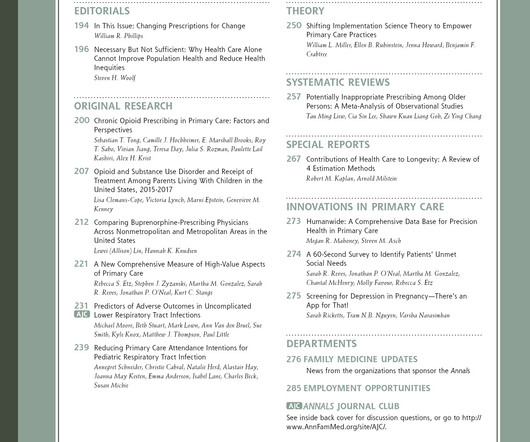Measuring Primary Care Access: Aligning Measurement with the Expanding Domains of Access [Systematic review, meta-analysis, or scoping review]
Annals of Family Medicine
NOVEMBER 20, 2024
Context: Despite the many well-established benefits of primary care (PC), the percentage of Americans with a source of usual care or with an ongoing PC relationship is declining. Measures were further categorized into 13 access domains.












Let's personalize your content